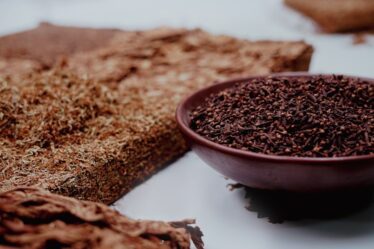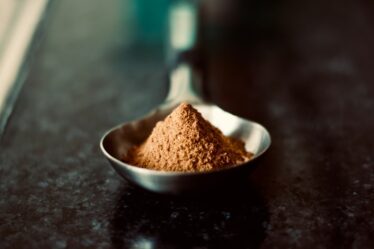
Chili red peppers have a long and fascinating history that dates back thousands of years. Native to the Americas, chili peppers were first cultivated by the indigenous people of Central and South America. They were then introduced to Europe by Christopher Columbus during his voyages in the late 15th century. Since then, chili peppers have become an integral part of cuisines all over the world.
The popularity of chili red peppers in different cuisines can be attributed to their unique flavor and heat. They add a spicy kick to dishes, enhancing their taste and making them more exciting. From Mexican cuisine to Thai cuisine, chili peppers are used in a variety of dishes, from soups and stews to sauces and marinades.
Key Takeaways
- Chili red peppers offer a unique and alluring flavor to any dish.
- They are packed with health benefits, including aiding in digestion and boosting metabolism.
- Chili red peppers can be used in a variety of culinary dishes, from soups to sauces to marinades.
- There are many different types of chili red peppers, each with their own distinct flavor profile.
- When selecting and storing chili red peppers, it’s important to consider their freshness and level of spiciness.
The Health Benefits of Chili Red Peppers
Chili red peppers are not only delicious but also packed with nutrients that can benefit your health. They are high in vitamins A and C, which are essential for maintaining a healthy immune system and promoting good vision. They also contain minerals like potassium and magnesium, which are important for maintaining proper heart health and regulating blood pressure.
One of the most well-known health benefits of chili red peppers is their ability to boost metabolism and aid in weight loss. The compound responsible for this is called capsaicin, which gives chili peppers their heat. Capsaicin has been shown to increase fat burning and reduce appetite, making it an effective tool for weight management.
In addition to their nutritional value, chili red peppers also have anti-inflammatory properties. The capsaicin in chili peppers has been found to reduce inflammation in the body, which can help alleviate symptoms of conditions like arthritis and inflammatory bowel disease.
Culinary Uses of Chili Red Peppers
Chili red peppers are incredibly versatile in the kitchen and can be used in a variety of ways to spice up your dishes. They can be used fresh, dried, or in powdered form, depending on the desired flavor and heat level.
One of the most common uses of chili red peppers is to spice up dishes. Whether it’s a pot of chili, a bowl of salsa, or a plate of tacos, adding chili peppers can take your dish from bland to flavorful in an instant. The heat and flavor of chili peppers can be adjusted by using different varieties and adjusting the amount used.
Chili red peppers are also commonly used to add heat and flavor to sauces and marinades. They can be blended into a sauce or marinade to add a spicy kick, or they can be used whole or sliced to infuse their flavor into the dish. The heat of the peppers can be adjusted by removing the seeds and membranes, which contain most of the capsaicin.
Another popular use for chili red peppers is in pickling and preserving. They can be pickled whole or sliced and added to jars of pickles or relishes. They can also be dried and ground into a powder, which can be used as a spice in a variety of dishes.
Types of Chili Red Peppers and Their Flavor Profiles
| Type of Chili Red Pepper | Scoville Heat Units (SHU) | Flavor Profile |
|---|---|---|
| Cayenne Pepper | 30,000-50,000 SHU | Spicy, slightly sweet, earthy |
| Jalapeno Pepper | 2,500-8,000 SHU | Mildly spicy, grassy, slightly sweet |
| Serrano Pepper | 10,000-23,000 SHU | Spicy, bright, slightly acidic |
| Thai Bird’s Eye Pepper | 50,000-100,000 SHU | Extremely spicy, fruity, slightly sour |
| Habanero Pepper | 100,000-350,000 SHU | Very spicy, fruity, slightly floral |
| Ghost Pepper | 800,000-1,041,427 SHU | Extremely spicy, smoky, slightly sweet |
There are many different types of chili red peppers, each with its own unique flavor profile and heat level. Some popular varieties include ancho, cayenne, jalapeno, habanero, and serrano.
Ancho peppers are dried poblano peppers and have a mild heat with a sweet and smoky flavor. They are commonly used in Mexican cuisine, particularly in sauces like mole.
Cayenne peppers are small and thin with a medium to hot heat level. They have a bright and slightly fruity flavor and are often used in spicy dishes like curries and hot sauces.
Jalapeno peppers are one of the most popular chili peppers in the world. They have a medium heat level with a crisp and slightly sweet flavor. They are commonly used in Mexican cuisine, particularly in salsas and guacamole.
Habanero peppers are extremely hot and have a fruity and floral flavor. They are often used in Caribbean and Latin American cuisines, particularly in hot sauces and jerk marinades.
Serrano peppers are similar to jalapenos but slightly hotter. They have a bright and crisp flavor and are commonly used in Mexican cuisine, particularly in salsas and sauces.
How to Select and Store Chili Red Peppers
When selecting chili red peppers, look for firm and shiny peppers with no soft spots or blemishes. The color of the pepper should be vibrant and uniform. Avoid peppers that are wrinkled or have dull skin, as this can indicate that they are past their prime.
Chili red peppers should be stored in a cool, dry place away from direct sunlight. They can be stored in the refrigerator for up to a week, but be aware that this can slightly dull their flavor. If you have an abundance of chili peppers, they can also be frozen or dried for long-term storage.
To freeze chili peppers, simply wash and dry them, then place them in a freezer bag or container. They can be frozen whole or sliced, depending on how you plan to use them. To dry chili peppers, simply string them together with a needle and thread and hang them in a cool, dry place until they are completely dried out.
Different Ways to Cook with Chili Red Peppers

There are many different ways to cook with chili red peppers, depending on your taste preferences and the dish you are making. Some popular cooking methods include roasting, grilling, frying, and sautéing.
Roasting chili red peppers brings out their natural sweetness and adds a smoky flavor to the dish. To roast chili peppers, simply place them under the broiler or on a grill until the skin is charred and blistered. Once roasted, the skin can be easily peeled off, and the peppers can be used in a variety of dishes.
Grilling chili red peppers is another great way to add flavor to your dishes. Simply place the peppers on a hot grill and cook until they are charred and softened. Grilled chili peppers can be used in salsas, sauces, or as a topping for grilled meats and vegetables.
Frying chili red peppers is a popular method in many cuisines, particularly in Asian cuisine. They can be deep-fried or stir-fried to add a crispy texture and a spicy kick to dishes. Frying chili peppers also helps to mellow out their heat slightly.
Sautéing chili red peppers is a quick and easy way to add flavor to your dishes. Simply heat some oil in a pan, add the sliced peppers, and cook until they are softened and slightly charred. Sautéed chili peppers can be used as a topping for tacos, salads, or grilled meats.
Another popular way to use chili red peppers is by infusing oils and vinegars with their flavor. Simply add sliced or whole chili peppers to a bottle of oil or vinegar and let them steep for a few weeks. The infused oil or vinegar can then be used in dressings, marinades, or as a finishing touch for dishes.
Classic Chili Red Pepper Recipes from Around the World
Chili red peppers are used in a variety of classic recipes from around the world. Here are just a few examples:
Mexican chili con carne: This classic Mexican dish combines ground beef, beans, tomatoes, and spices with chili red peppers for a spicy and flavorful stew. It is often served with rice, tortillas, and toppings like cheese, sour cream, and cilantro.
Thai green curry: Thai green curry is a spicy and aromatic dish made with coconut milk, green curry paste, and a variety of vegetables and proteins. Chili red peppers are a key ingredient in the curry paste, adding heat and flavor to the dish.
Indian vindaloo: Vindaloo is a popular Indian curry dish that originated in the region of Goa. It is made with a variety of spices, including chili red peppers, vinegar, and meat or vegetables. Vindaloo is known for its fiery heat and complex flavors.
Korean kimchi: Kimchi is a traditional Korean side dish made with fermented vegetables, including chili red peppers. It is spicy, tangy, and packed with umami flavors. Kimchi can be eaten on its own or used as an ingredient in other dishes like stews and fried rice.
Pairing Chili Red Peppers with Other Ingredients
When cooking with chili red peppers, it’s important to balance their heat with other flavors to create a well-rounded dish. Here are some tips for pairing chili red peppers with other ingredients:
Balancing heat with sweetness and acidity: The sweetness of ingredients like sugar, honey, or fruit can help balance out the heat of chili red peppers. Similarly, the acidity of ingredients like vinegar or citrus juice can help cut through the heat and add brightness to the dish.
Complementing flavors with herbs and spices: Herbs and spices can enhance the flavor of chili red peppers and add complexity to your dishes. Ingredients like garlic, ginger, cumin, coriander, and oregano pair well with chili peppers and can help bring out their natural flavors.
Pairing with different proteins and vegetables: Chili red peppers can be paired with a variety of proteins and vegetables to create delicious dishes. They pair well with meats like beef, chicken, pork, and seafood, as well as vegetables like bell peppers, onions, tomatoes, and corn.
Growing and Harvesting Chili Red Peppers at Home
If you’re a fan of chili red peppers, you may want to consider growing them at home. Chili peppers are relatively easy to grow and can be grown in containers or in the ground, depending on your available space.
When choosing a variety of chili pepper to grow, consider your climate and growing conditions. Some varieties are better suited to hot and dry climates, while others thrive in cooler and more humid conditions. Popular varieties for home gardens include jalapeno, cayenne, and habanero.
To grow chili peppers, start by planting seeds or seedlings in well-draining soil in a sunny location. Water regularly and fertilize as needed to promote healthy growth. Chili peppers can be harvested when they reach their desired size and color. Simply cut the peppers from the plant using a pair of scissors or pruners.
If you have an abundance of chili peppers, there are several ways to preserve and use them. They can be dried by hanging them in a cool, dry place until they are completely dried out. Dried chili peppers can be ground into a powder or used whole in dishes. They can also be frozen for long-term storage by washing and drying them, then placing them in a freezer bag or container.
Precautions and Safety Tips When Handling Chili Red Peppers
When handling chili red peppers, it’s important to take precautions to protect yourself from their heat. Here are some safety tips to keep in mind:
Wear gloves when handling hot peppers: The capsaicin in chili peppers can cause a burning sensation on your skin, so it’s important to wear gloves when handling hot peppers. This will help protect your hands from the heat and prevent any accidental contact with your eyes or sensitive skin.
Avoid contact with eyes and sensitive skin: If you do come into contact with chili pepper juice or seeds, avoid touching your eyes or sensitive skin. Capsaicin can cause a burning sensation and irritation, so it’s important to wash your hands thoroughly after handling hot peppers.
Properly clean and sanitize equipment and surfaces: After handling chili peppers, be sure to properly clean and sanitize any equipment or surfaces that may have come into contact with the peppers. This will help prevent cross-contamination and ensure that your dishes are safe to eat.
In conclusion, chili red peppers are a versatile and flavorful ingredient that can add a spicy kick to a variety of dishes. They have a long and fascinating history and are popular in cuisines all over the world. In addition to their delicious taste, chili red peppers also offer a range of health benefits, from boosting metabolism to reducing inflammation. Whether you’re cooking up a classic chili con carne or experimenting with new flavors in the kitchen, chili red peppers are sure to add excitement and flavor to your dishes.
If you’re a fan of chili red peppers, you might also be interested in exploring the delightful world of Baesuk, a Korean pear delicacy. This unique article from Flavorful Sips takes you on a journey to discover the sweet and refreshing flavors of Baesuk, a traditional Korean dessert made with ripe pears. Learn about the history and cultural significance of this delectable treat, and even find a recipe to try it at home. Check out the article here and expand your culinary horizons beyond chili red peppers.



